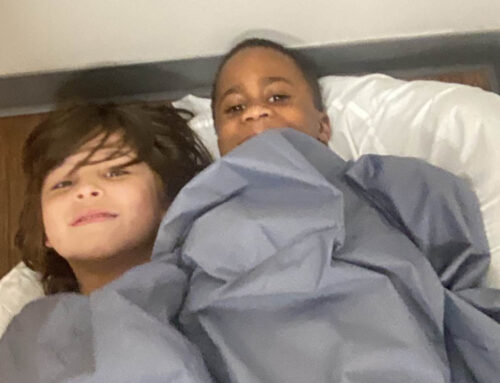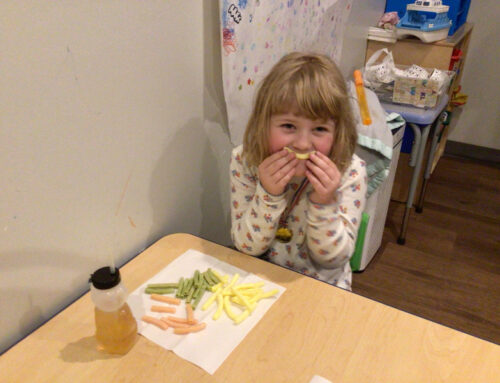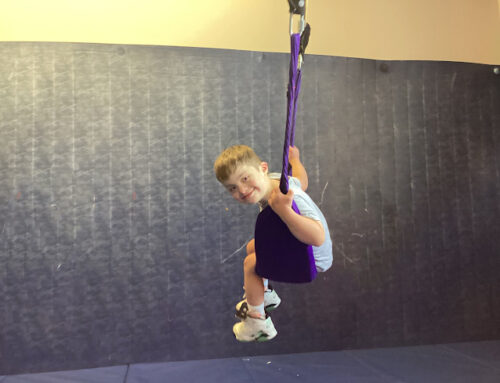How many senses do we have? If you answered five, you’re in good company, but you might be surprised to learn the real number is twelve. Our sensory system is a complex network that goes far beyond sight, sound, smell, taste, and touch. Research in neuroscience has shown that we have at least twelve sensory experiences.
Because sensory input profoundly impacts a neurodiverse child’s world, understanding this expanded system can help you as a parent be better prepared for the challenges of daily life.
This three-part series is designed to explain and explore the twelve senses and their impact on neurodiverse children. We will provide clear explanations, practical activities, and helpful tips to discuss these concepts with your child.
From Five Senses to Twelve: A Brief History
The idea of our senses is not new. The concept dates back to the 4th century BCE, when the philosopher Aristotle first identified sight, hearing, smell, taste, and touch as the primary ways humans perceive the external world. For centuries, these “traditional five” were considered the complete picture.
However, as science evolved, so did our understanding. In the 19th and 20th centuries, researchers began to uncover the “hidden” senses that govern our internal world. Pioneers like occupational therapist Dr. A. Jean Ayres revolutionized the field with her work on sensory integration theory. She highlighted the importance of the vestibular sense (balance) and proprioception (body awareness), noting how crucial they are for motor skills and emotional regulation, especially for children with developmental differences.
Today, this framework has expanded even further in therapeutic and educational settings. Modern neuroscience recognizes additional senses that are vital for self-regulation, including:
- Interoception: Our sense of internal body signals, like hunger or thirst.
- Thermoception: Our ability to sense temperature.
- Nociception: Our perception of pain.
- Chronoception: Our internal sense of time.
This expanded list offers a more holistic way to understand and support neurodiverse children. A hypersensitivity to the ticking of a clock or an under-responsiveness to hunger cues are not just behaviors, but reflections of how a child’s unique brain processes sensory information.
What to Expect in This Series
We have structured this series to guide you through all twelve senses, with a focus on practical application for your family. Each article includes kid-friendly explanations, simple activities, and supportive parenting tips.
- Part 1: The Five Traditional Senses. We will start with a familiar foundation—sight, hearing, smell, taste, and touch—and explore how they can be experienced differently by neurodiverse children.
- Part 2: Balance and Body Position. This article dives into the two critical “hidden” senses: the vestibular system (balance) and proprioception (body awareness), which are foundational for movement and self-regulation.
- Part 3: The Internal Senses. We will conclude by exploring the more subtle senses, including interoception, temperature, pain, time, and direction, and their connection to emotional well-being and daily routines.
Whether your child actively seeks intense sensory input or tends to avoid it, this series will equip you with the knowledge and tools to navigate their world with greater empathy and confidence. Let’s begin this journey of discovery together.
The Five Traditional Senses: Helping Neurodiverse Children Understand and Navigate Their World
Welcome to the first part of our series on the twelve senses. As a parent of a neurodiverse child, you are deeply aware that sensory experiences can be a source of both wonder and challenge. Neurodiverse children process sensory input in a way that is unique to them. This can lead to overstimulation, under-sensitivity, or distinct perceptions that influence daily routines, learning, and emotions.
In this series, we will explore all twelve senses, moving beyond the traditional five to include lesser-known but equally important ones like balance, body awareness, and even the sense of time.
This first article focuses on the classic five senses: sight, hearing, smell, taste, and touch. We will discuss what each sense is, how it might feel different for a neurodiverse child, and practical ways to explain it all. Our goal is to empower you with tools, activities, and conversation starters that foster understanding, self-regulation, and joy.
Why start with these five? They are the foundation of how we interact with the world, and for many neurodiverse children, their effects are the most immediately noticeable. Sensory processing differences can make bright lights feel painful or certain textures unbearable.
With gentle explanations and simple adaptations, you can help your child build confidence in navigating their world. Remember, every child is unique, so adapt these ideas to fit their age, interests, and needs. Let’s dive in.
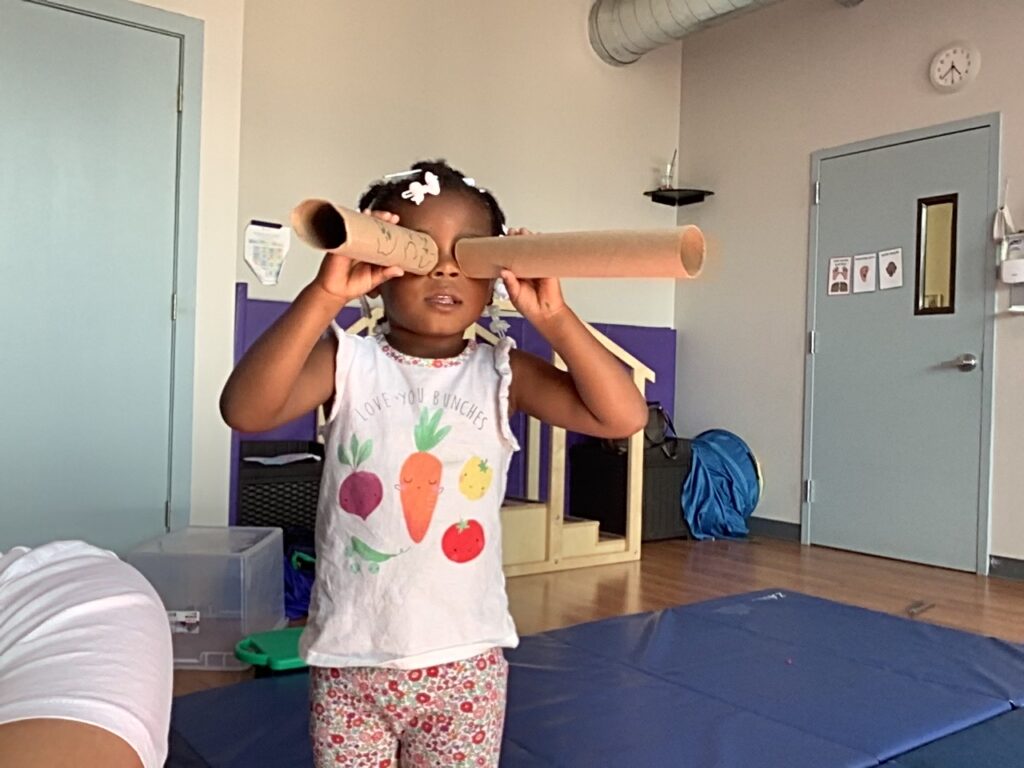
Understanding Sight: The Visual Sense
Sight is how we perceive light, colors, shapes, and movement through our eyes. For neurodiverse children, visual input can sometimes be overwhelming—think of fluorescent lights that seem to flicker and strobe. For others, it may be under-responsive, causing them to miss details.
To explain sight to your child, try using simple analogies: “Your eyes are like superhero binoculars that let you see things both far away and up close. Sometimes, seeing too much can make your brain feel tired, just like when the sun is too bright.” If your child avoids eye contact or fixates on specific patterns, you can frame it positively: “Everyone sees the world a little differently. Your way of seeing might notice cool details that others miss!”
By normalizing these experiences, you help your child find the words to express their feelings, like, “My eyes feel tired from the light,” which is a powerful step toward self-advocacy.
Practical Tips and Activities:
- Create a Calm-Down Corner: Designate a space with dim lighting where your child can retreat. Offer sunglasses to help reduce visual stimulation when they feel overwhelmed.
- Play “I Spy” with a Twist: Focus on finding objects of a single color at a time. This helps build visual tolerance without becoming overwhelming.
- Use Visual Aids: Find age-appropriate books or apps that explain how our eyes work. Simple diagrams showing light entering the eye can make the concept more concrete.
Hearing: The Auditory Sense
Hearing allows us to detect sounds—from gentle whispers to loud music—through our ears. It’s like having personal radios tuned to the world’s soundtrack. Neurodiverse children might be hypersensitive to certain sounds, where a vacuum cleaner can sound like a jet engine. Others may be hyposensitive, needing louder volumes to register and engage with a sound.
You can explain it like this: “Your ears are amazing listeners that pick up all kinds of sounds. If a sound feels too big, it’s because your ears are extra sensitive, like a superpower that sometimes needs a shield.” For a child who has trouble filtering out background noise, you could say: “There are so many sounds around us, and sometimes they all try to talk at once. We can practice focusing on just one sound at a time.”
These strategies can turn potentially stressful situations into learning moments, helping children feel more in control of their auditory environment.
Practical Tips and Activities:
- Introduce “Sound Shields”: Offer noise-canceling headphones or earplugs as tools your child can use. Explain, “These can help turn down the volume when the world gets too loud.”
- Go on a Sound Scavenger Hunt: Take a quiet walk and listen for different sounds. Identify soft sounds, like rustling leaves, and loud ones, like a passing truck, to build auditory awareness.
- Enjoy Storytime with Sounds: Read books that have audio elements or sound effects. Pause to discuss how different sounds make us feel—happy, surprised, or calm.
Smell: The Olfactory Sense
Our sense of smell works through the nose, capturing scents from tiny particles in the air. It’s like being a detective, sniffing out clues about food, flowers, or even danger. For neurodiverse children, certain smells can be incredibly intense—a spritz of perfume might feel like a direct assault. In contrast, others may have a diminished sense of smell, making it harder to notice important scents like smoke.
To explain it, try this: “Your nose is a super-sniffer that tells you if something smells yummy, like cookies baking, or yucky, like old socks. Sometimes, smells might feel extra strong to you, and that’s just your body’s way of being super alert.”
Building a vocabulary for smells helps children better express their needs and discomfort, allowing them to say, “That smell is too strong for me.”
Practical Tips and Activities:
- Create Scent Jars: Place cotton balls with a few drops of mild scents (like vanilla, lemon, or peppermint) into small jars. Let your child smell them and describe what they notice.
- Explore Calming Aromas: Introduce calming essential oils, such as lavender, in a diffuser. Explain, “This gentle smell can help our bodies feel relaxed when other smells are too much.”
- Connect Smell and Taste: During meals, talk about how the smell of food prepares us for its taste. This can help reduce anxiety around trying new foods by linking the senses in a positive way.
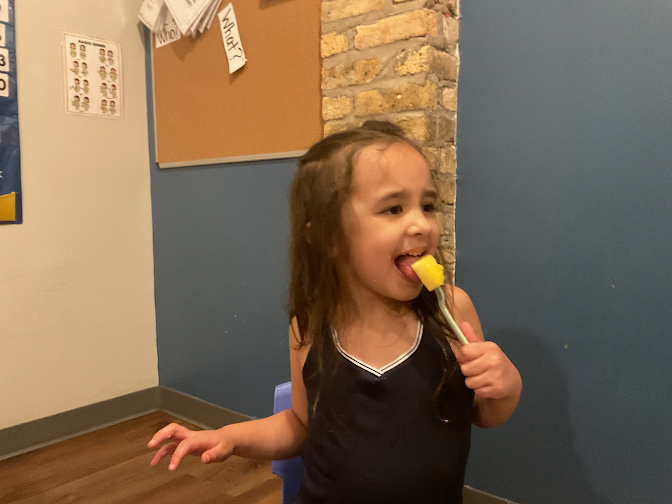
Taste: The Gustatory Sense
Taste happens on our tongue, where taste buds identify sweet, sour, salty, bitter, and umami flavors. It’s our mouth’s way of exploring the world. Neurodiverse children often have very strong preferences or aversions related to food. The texture of a food might be more important than its flavor, or they may seek out intensely flavored foods while avoiding milder ones.
Explain it simply: “Your tongue is a flavor-tester that decides if something is delicious. Sometimes a new taste can feel too big, but we can try it in small, fun ways.” For children who are selective eaters, you can add: “Everyone’s taste buds are different—yours might really love crunchy things, and that’s perfectly okay!”
This gentle approach can help reduce mealtime stress and encourage a more positive relationship with food.
Practical Tips and Activities:
- Map Out Flavors: Create a simple chart to explore different tastes. Use a small piece of lemon for sour or a pretzel for salty. Talk about the sensations without pressure.
- Engage in Sensory Food Play: Make edible playdough or blend smoothies together. This allows for low-pressure exposure to new tastes and textures in a playful setting.
- Pair New with Familiar: Introduce a tiny portion of a new food alongside a favorite one. Explain, “Let’s let this new food hang out with a food you already love.”
Touch: The Tactile Sense
Touch is our sense of pressure, texture, temperature, and pain, all perceived through our skin. It’s how we feel a soft blanket, a warm hug, or a scratchy sweater. For neurodiverse children, touch can be a complex sense. Some may be hypersensitive, where the tag on a shirt feels like needles. Others may be hyposensitive, seeking deep pressure to feel calm and grounded.
You can explain it this way: “Your skin is like a big sensor that feels everything—soft, rough, warm, or cold. If something feels itchy or just ‘too much,’ that’s your body sending you a signal.” Empower them by adding, “We can choose touches that feel good, like squeezing a squishy toy or wrapping up in a heavy blanket.”
Practical Tips and Activities:
- Create Texture Bins: Fill containers with different materials like dry rice, water beads, fabric scraps, or slime for safe tactile exploration. Ask, “How does this feel on your hands?”
- Use Deep Pressure Tools: Introduce weighted blankets or lap pads. Explain, “This big squeeze can help your body feel safe and calm.” Offer firm hugs if your child enjoys them.
- Involve Them in Clothing Choices: Let your child help pick out their clothes, focusing on what feels comfortable. This teaches them to honor their tactile needs and builds autonomy.
The five traditional senses are our primary gateways to the world. For neurodiverse children, these gateways can be wider or narrower, amplifying some experiences while muting others. By explaining these senses with empathy and using playful, practical activities, you give your child the language and tools to better understand and navigate their unique experiences.
Stay tuned for Part 2, where we will explore the “hidden” senses of balance and body position. And remember, if you have specific concerns, consulting with a professional like an occupational therapist can provide personalized advice and support for your family.
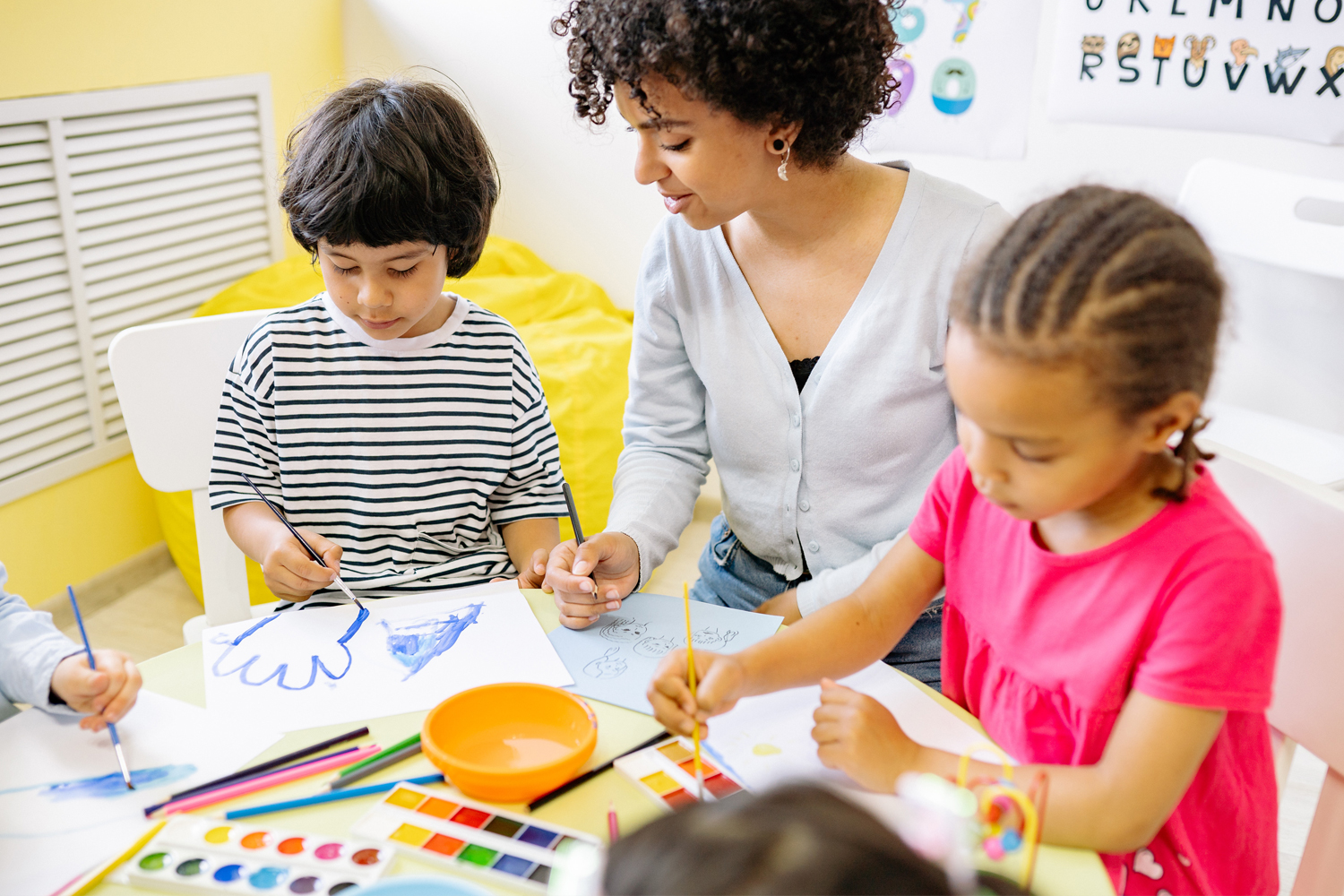
Blue Bird Day—the first therapeutic preschool and kindergarten program in the nation—fosters socialization, sensory regulation, and pre-academic learning in children ages 2-7 years. Our compassionate therapists practice a relationship-based and family-centered approach, provide parent training, and collaborate on goals and individualized intensive treatment plans for your child.
We believe in a collaborative and multi-disciplinary team approach to therapy. A team of occupational therapists, speech-language pathologists, dietitians, developmental therapists, behavioral therapists, physical therapists, and therapeutic assistants are created for each child to ensure child and family are fully supported and the best possible results are achieved.
Options for individualized, group and virtual therapy sessions are available as well.
Want to learn more or you have a specific question? Feel free to connect with us here!

